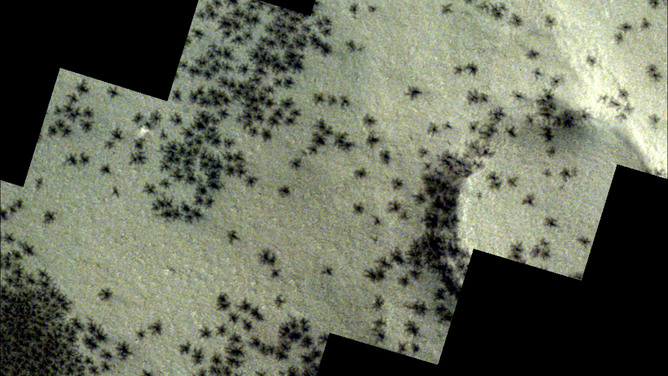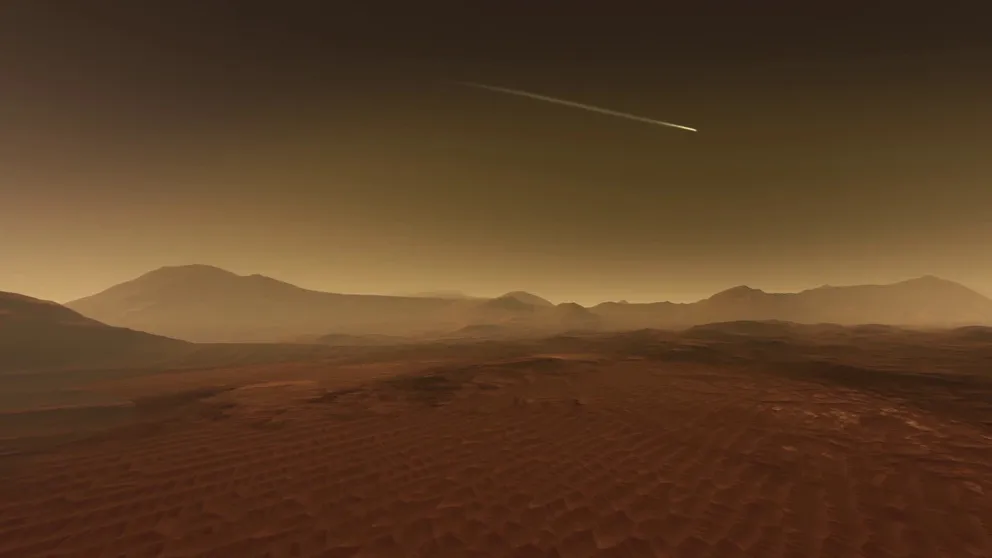Satellite spots spider-like formations on Mars
Mars is the fourth planet from the Sun, with temperatures that can reach the 70s during the day and plummet to more than 200 degrees below zero at night. Similar to Earth, Mars’ poles are ice-covered, which expands and contracts with the seasons.
NASA's exploration of Mars
NASA animation of Perseverance's mission on the Red Planet.
Astronauts with arachnophobia may not want to be the first humans to set foot on the Red Planet when NASA intends to launch a crew in the 2030s.
Recently released satellite imagery by the European Space Agency (ESA) showed spider-like formations on the Martian surface, but according to experts, the patterns are simply unique geological features rather than any type of arachnid.
Mars, the fourth planet from the Sun, is covered by a large amount of ice due to its atmosphere.
According to the ESA, as sunlight mixes with carbon dioxide, it triggers the release of gases that fracture the ice, allowing dust to reach the surface and form the spider-like figures.
And while pictures of these formations may make them seem small, they are anything but, with measurements estimated to be anywhere from around 50 yards to over half a mile wide.

Satellite discovers spider-like formations on Mars
(European Space Agency / FOX Weather)
‘MARTIANS WANTED’: NASA SEEKING APPLICANTS TO LIVE IN YEAR-LONG MARS SIMULATOR
The spider-like figures were spotted near the planet’s south pole in a region called the Inca City.
The name originates from large ridges in a giant crater that resemble the ancient ruins of the Incas.
Why they appear to be more prevalent in some regions over others still mystifies scientists.
The recent sighting was not the first time that the spider-like figures had been spotted; images from various missions have shown the phenomenon during the Martian spring.

Satellite discovers spider-like formations on Mars from a previous mission.
(European Space Agency / FOX Weather)
SEE THE OBJECTS HUMANS LEFT BEHIND ON THE MOON
"Originally, scientists thought the spots were patches of warm, bare ground exposed as the ice disappeared. But observations made with THEMIS (Thermal Emission Imaging System) on NASA’s Mars Odyssey orbiter told us the spots were nearly as cold as the CO2 ice, which is at -198° Fahrenheit," Phil Christensen, a professor at Arizona State University, previously stated.
The orbiter that captured the imagery, ESA’s Mars Express, has been in operation since 2003 and is one of seven satellites orbiting the Red Planet.
In addition to the seven orbiters, two rovers, Curiosity and Perseverance, are in operation on the planet’s surface.
